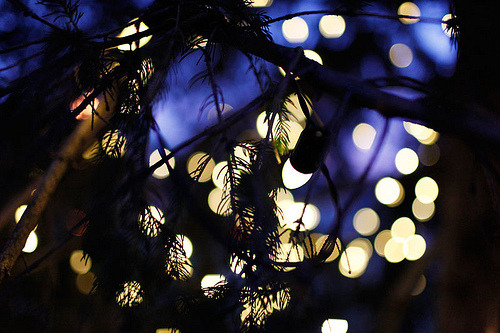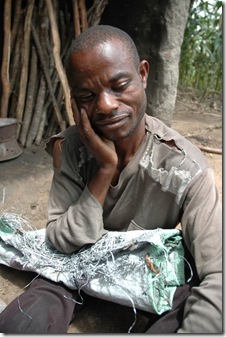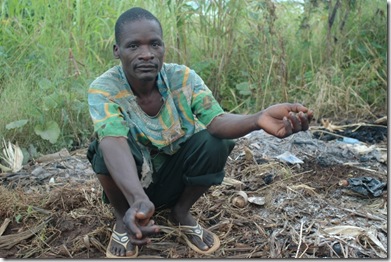“There’s nearly always a suggestion in these discussions that if you don’t back the artist (as opposed to the photographer) you’re trampling on their freedom of expression. In these situations (not all of which went to court) — Jeff Koons and Andrea Blanch, Richard Prince and the original photographers of the Marlboro Men campaign, Warhol and Frank Powolny (who took the Marilyn Monroe photograph), and now Fairey and Garcia — there’s an implication that defining yourself as an “artist” as opposed to a “photographer” makes you more important and gives you special privilege. It also implies that a straightforward photograph is of lesser significance or value than a painting or conceptual work of art. I object.”

Switzerland-based Corinne Vionnet is our guide to the world's most famous landmarks, monuments millions have visited before. Her art is created not by acrylic, oil, or watercolor, each piece is made by combining hundreds of tourist photos into one. After conducting an online keyword search and sifting through photo sharing sites, this Swiss/French artist carefully layers 200 to 300 photos on top of one another until she gets her desired result.
Look closely and you'll see dim shadows, vague silhouettes that aimlessly wander around. More than anything, these haunting figures make us think about our own fading memories and the inevitable passage of time. "Why do we always take the same picture, if not to interact with what already exists?," Vionnet asks. "The photograph proves our presence. And to be true, the picture will be perfectly consistent with the pictures in our collective memory."
The old adage, “f/8 and be there,” is dead. Long live shooting purely on f/1.2, because if you can do it, you might as well do it right.
What’s that you say? A lens isn’t at its sharpest when it’s wide open? Whatever. A picture doesn’t have to be good if it has bokeh. I think my ideal picture would be President Obama playing with puppies and small multicultural children against a field of rainbow bokeh.
The word beautiful doesn’t even cut it.
“Three years before Photoshop 1.0, Soviet computer engineers were already retouching old, damaged images using this amazing piece of technology. Rotary scanner! Magnetic tape! Trackball! Z for zoom!”
PHOTOKINA 2010, COLOGNE, GERMANY, September 21, 2010 — FUJIFILM Corporation is pleased to announce the new FinePix X100, a high-grade digital compact camera featuring an APS-C CMOS sensor, a Fujinon 23mm fixed focal length lens and a newly developed Hybrid Viewfinder, due for commercial release in early 2011.
The FinePix X100 is aimed at the professional photographer or keen enthusiast looking for exceptional quality pictures from a compact camera. It is designed to appeal to the millions of DSLR users who need a slim back-up camera for high quality in-fill shots when the use of a bigger SLR system is either inconvenient or impractical. Or, of course, it can be used as a professional’s only top-end camera, if size and versatility are the primary considerations.
Fujifilm has closely studied the current line-up of professional cameras and feels that there is a strong need for a compact high-quality (APS-C based) camera as a counterpoint to an SLR. Using the experience of working with generations of photographers using famous emulsions like Velvia, Provia, Astia etc., Fujifilm engineers distilled this knowledge into months of careful study to create the perfect compact-sized professional camera.
The priority for this model is picture quality, so it was decided to make the highest quality possible lens and sensor combination, built from the ground-up. The lens chosen is a fixed, prime F2 lens, made by Fujinon, manufactured to perfectly match the APS-C custom sensor. Added to this is the newly-developed EXR Processor, which combines all the latest image processing technology Fujifilm has built up over the years.
Other cameras on the market look to fill the need for the ultimate ‘compact’ professional camera, but the Fujifilm development team believe that, having listened to the marketplace, the FinePix X100 offers a number of technical developments that will set this camera apart from other contenders.
Having shot an entire trip to Paris with a single 28mm F1.4 lens, I think traveling with a 23mm F2 would be fantastic. Unfortunately, it's a 35mm equivalent, which isn't as wide as I'd like.
That said, Fujifilm designed for shooting at F2, with a 9 blade aperture for creamy bokeh, and a built in 3-stop neutral density (ND) filter to let you keep the aperture wide open.
I left the decisions about how Bauleni would present himself entirely up to him. I only told him that I wanted to take one photo of him “wochena” (the Chichewa equivalent of “dressed to kill”) and another of him “wosachena,” or “dressed very poorly.” Bauleni got right into character and we ended up having a lot of fun taking the photos.
As Bauleni went into his house to find his prized umbrella, I began to wonder how unique these photos might be. Do many organizations ask people how they want to be represented before the photographs start being taken?
Edward Kabzela – Chagunda Village, Malawi
Edward Kabzela is an area borehole maintenance mechanic who I had the privilege of staying with for five days to learn a bit about his work. As an area mechanic, he helps village committees keep their water points functioning by doing repairs and preventative maintenance.
Edward is quite successful, both as an area mechanic and through other business initiatives. He grows tobacco, works with a basket weaving business, collects rent from a shop he rents out in the market, and services over 60 water points in his area. Next year, he is thinking of investing in a truck to start a transportation business. He is a great example of how little a thatched roof says about someone’s livelihood.
Edward was pretty excited about the project, but he had a pretty hard time keeping a straight face for the photos of him trying to look "poor." He looked so ridiculous that I’ve included one of the photos in the set. The photos of Bauleni Banda had the same kind of hilarity, with community members shouting out helpful hints on how to "look more poor." Neither had any trouble putting on their best and looking sharp.
Another example of how media shapes the ideas we have of things we haven't understood for ourselves. My memories of Africa are entrepreneurial, not poverty-stricken.
of all the gallery apps ive tried, zenphoto was one of the best.
While ZenPhoto looks fantastic depending on the theme, the back end's "AJAX file manager" could use a little work.

i dreamed i could fly
out in the blue
over this town
followin' you
over the trees
subways and cars
Did you hear the one about the mother banned from taking a snapshot of her baby in the pool? Or the student prevented from photographing Tower Bridge at sunset? Be warned. UK authorities now have the power to confiscate your camera — or even arrest you — for daring to take a picture in public.





